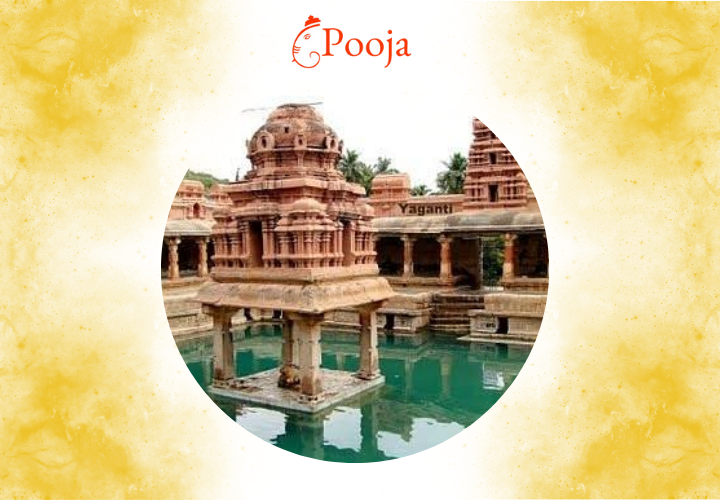About this puja
The Narasimha Swamy Temple in Yaganti, located in the Kurnool district of Andhra Pradesh, India, is a revered Hindu temple dedicated to Lord Narasimha, the fourth avatar of Lord Vishnu. This ancient temple is renowned for its unique rock-cut architecture, historical significance, and captivating mythological tales.
Mythological Origins and Story
Legend of Sage Agastya
The origin of the Yaganti temple is associated with the legendary sage Agastya. According to folklore, Agastya sought to perform a grand yagna (sacrificial ritual) at Yaganti, but he faced an obstacle: the stubborn growth of a rock called the "Growing Nandi." In an act of devotion and determination, Agastya prayed to Lord Shiva, who, impressed by his devotion, blessed him by making the Nandi statue stop growing, granting him the opportunity to complete the yagna.
Legend of Sage Agastya and Sri Venkateswara Swamy
Another popular legend narrates the encounter between Sage Agastya and Lord Venkateswara (a form of Lord Vishnu). According to this tale, Sage Agastya desired to visit Tirumala to worship Lord Venkateswara but was unable to do so due to his old age and physical limitations. In response to his sincere devotion, Lord Venkateswara manifested himself in the form of a hill, allowing Sage Agastya to worship him from afar, leading to the creation of Yaganti.
Historical Development
The Yaganti temple has a rich historical legacy dating back to the Vijayanagara period in the 15th century. It underwent significant renovations and enhancements during the reign of the Vijayanagara kings, particularly King Harihara Raya, who made substantial contributions to its architecture and endowment.
Architectural Features
One of the most striking features of the Yaganti temple is its unique rock-cut architecture. The temple complex is nestled amidst the scenic backdrop of the Yerramala hills, and the main sanctum is carved out of a single rock formation. The sanctum houses the idol of Lord Narasimha in a fierce form, depicting him as Ugra Narasimha. The temple also features intricately carved pillars, mandapams (pillared halls), and a majestic gopuram (entrance tower), showcasing the architectural grandeur of the Vijayanagara era.
Spiritual Significance and Pilgrimage
The Narasimha Swamy Temple in Yaganti holds immense spiritual significance for devotees seeking the blessings of Lord Narasimha for protection, courage, and liberation. The temple attracts pilgrims from across India, who undertake the journey to seek the divine presence of the fierce Narasimha deity. The serene surroundings and tranquil ambiance of the temple complex create a conducive atmosphere for meditation and spiritual contemplation.
Continued Reverence
Even today, the Narasimha Swamy Temple in Yaganti continues to inspire devotees with its rich history, unique architecture, and profound spiritual resonance. It stands as a timeless symbol of devotion, resilience, and the eternal presence of Lord Narasimha, perpetuating the sacred legacy of Sage Agastya and the divine manifestations of Lord Vishnu.
Comments (0)

.png)







